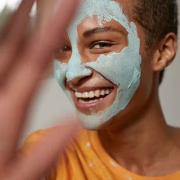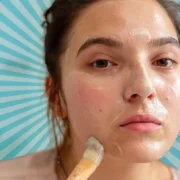Vision therapy is a program prescribed and supervised by eye doctors that help improve the visual skills of a patient, like improving visual processing speed, eye-tracking, focus, and eye-brain coordination. Vision therapy is like physical therapy; it aims to enhance vision through neuroplasticity by constantly repeating a learned concept. The procedure is non-surgical, and the improvement process varies from one person to another.
The Treatable Conditions
Vision therapy is a recommendation for some vision problems, like amblyopia or lazy eye, depth perception, or 3D vision difficulty. Eye fatigue, convergence insufficiency, saccadic dysfunction or eye tracking problems, double vision, focusing difficulty, strabismus or crossed eyes, hand-eye coordination problem, traumatic brain injury or concussion, and visual processing problems.
Signs and Symptoms To Look For
Vision therapy has proved to be significantly beneficial for both adults and children. Children who have undergone the program tend to have higher grades in school. Many children have benefited by attending the Bowersox Vision Center for the vision therapy program.
Some symptoms include omitting words when reading, headaches, and poor comprehension. Avoids reading in class or at home, have poor handwriting skips or repeats some lines when reading, and if they have ADHD or are slow learners in school.
Benefits of Vision Therapy
Vision therapy has a wide range of advantages for both children and adults, including:
Remedy for Some Visual Problems
The first step is to visit an eye doctor, who will thoroughly examine your eye condition. The optician will refer you to the best facility to undergo your therapy. Remember, not all visual problems are treatable in therapy sessions.
Builds Social Life and Academic Performance
Children and adults who have undergone this program have become victorious academically. Poor vision can prevent the child from seeing the board while the teacher is teaching, or poor eye-brain coordination can be a barrier to high academic performance. Social life is also significantly affected by the loss of self-confidence associated with poor academic performance.
No Side Effects
Visual therapy is a non-surgical procedure that uses neuroplasticity. The method involves the repetition of activities until the brain adapts to external stimuli. The program is available to any age, but the improvement process may vary from one person to another.
Improves People’s Lives
Testing and verification of the program have positive results. Children improve their academic performance and self-confidence by undergoing the procedure. There is an improvement in hand-eye coordination, visual function from the program, and a sense of independence from the patients.
Solves Computer Vision Syndrome
In this modern world, people use computers for most of their daily activities. It has negative side effects causing poor vision, headaches, or even eye strain. To solve this problem, visit an optician for a referral to a visual therapy program.
Strengthens Eye-Brain Coordination
Poor vision can negatively affect your daily performance. In children, poor visualization of information can negatively impact good understanding, causing poor academic performance. As a parent, it is advisable to take your child to an optician after observing certain behaviors. You can save the child from a lot of trouble associated with low grades by taking them for visual therapy and positively impacting their social life.
How Does It Work?
First is recognizing and acknowledging the visual problem, then visiting an optician who will conduct a thorough test. The assessment will determine if the patient is viable to join visual therapy. Some eye problems require a surgical process, while others need to go for non-surgical treatment, and other issues require medicine.
The eye doctor will determine the solution if they diagnose that the patient needs vision therapy. The government has allowed the fees to be billed to the medical insurance coverage. The process could take weeks or months, depending on the condition.
A couple of activities occur in the therapy sessions, including eye focusing, eye alignment, eye teaming, and eye movements, using different tools like prisms, therapeutic lenses, filters, balance boards, patches, and electronic gadgets with timing capability.
Conclusion
As human beings, we should take care of every part of our bodies properly and equally. Visiting visual therapy should be taken with the same seriousness as physical therapy after an accident.
Photo by Antoni Shkraba: https://www.pexels.com/photo/man-in-optical-trial-frame-6749727/






